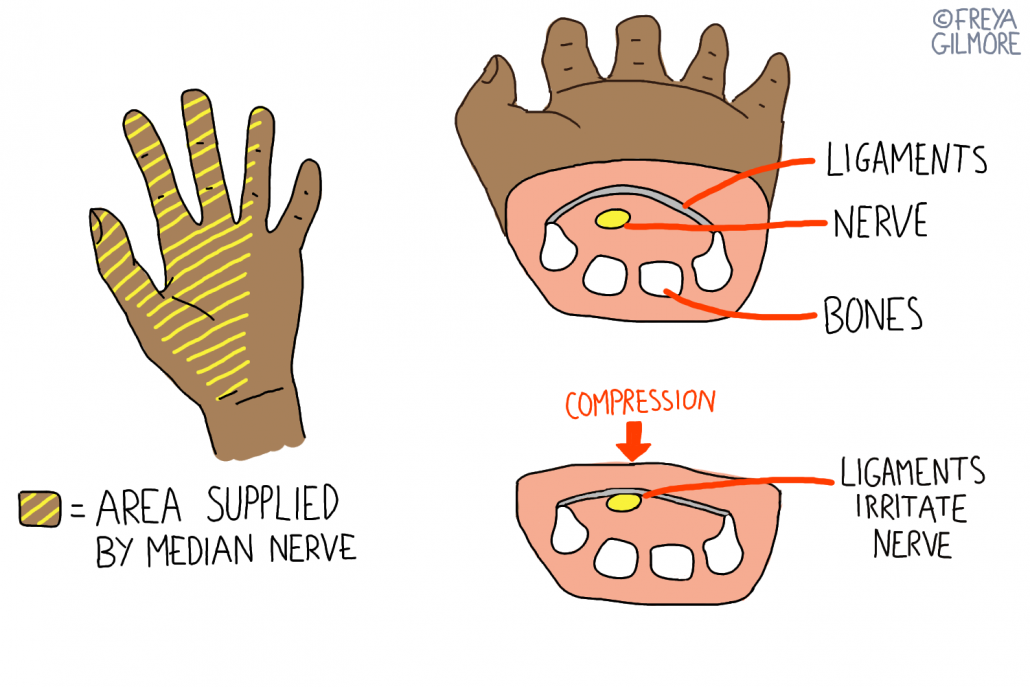Carpal Tunnel Syndrome (CTS) is a collection of symptoms caused by compression of the median nerve in the carpal tunnel. Alongside the median nerve, other nerves and tendons run through this tunnel, which is located on the underside of the wrist.

The symptoms of an irritated nerve can include:
- Pain, often sharp or shooting
- Numbness
- Weakness
- Pins and needles
These typically affect the area shaded in yellow above, as this is the area supplied by the nerve in question. There is some variation from person to person, but if the symptoms are in a dramatically different place, your osteopath will consider other causes of hand pain.
Causes of Carpal Tunnel Syndrome
As the tunnel is so closely packed, anything that increases pressure can cause irritation.
Pregnancy and Menopause
During pregnancy, it is not unusual to develop some degree of water retention. This is enabled by a hormone that begins circulating in the first trimester, so this may be a relatively early symptom. Over the course of a pregnancy, we can expect circulating fluids to increase by up to 50%, so the combined effect is unsurprisingly common.
This can be associated with CTS when the swelling affects the hands and wrists. This can be subtle, and may not be visible to the eye but instead indicated by rings becoming too tight. If the swelling affects the carpal tunnel, it can add a small but constant pressure to the contents of the tunnel, and may compress the nerve.
Menopause can also cause water retention, so development of CTS at this time of life could be caused in the same way.
Other Causes of Water Retention
There are other possible causes of water retention beyond hormones.
Chronic kidney disease and congestive heart failure can lead to water retention. Excessive swelling in pregnancy should be investigated, as it may be a sign of pre-eclampsia.
There are also a few medications whose side effects include water retention. Some commonly used drugs such as corticosteroids are part of this group. Even NSAIDs like ibuprofen can have an effect.
Poor Ergonomics and Carpal Tunnel Syndrome
When setting up your desk ergonomically, you want to have your wrists straight and neutral, but not resting too heavily on the desk. If you arm rests are too low (or your desk is too tall), you may be inclined to rest your wrists on the edge. Depending on positioning, this can cause direct pressure onto the carpal tunnel.
Cushioned mats designed to support the wrist may also cause this pressure. Ideally, if you can get your forearms into a good ergonomic position, the mats will be completely unnecessary anyway.
Muscular overuse
Among the other structures passing through the tunnel, we also have the tendons of the wrist flexor muscles. When these muscles are overstrained, they can cause golfer’s elbow, or they might be irritated and inflamed around the carpal tunnel. A sudden increase in usage can cause these kinds of problems, such as gripping, carrying bags, or using heavy cookware. Managing the tension before it develops into another problem is something your osteopath can help you with.
If you are suffering the symptoms of CTS, you can book an appointment with an osteopath here.
